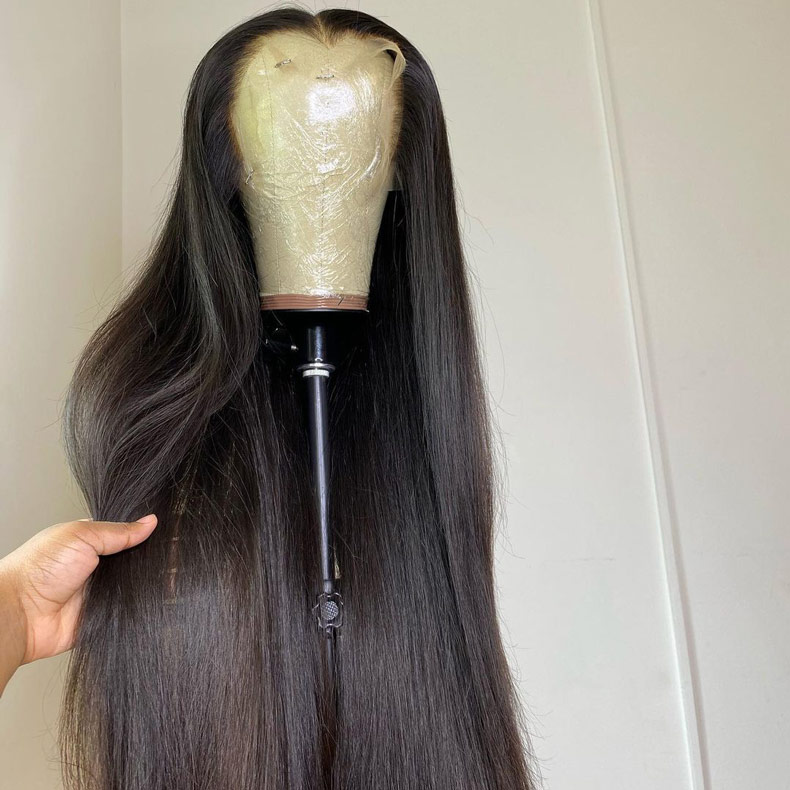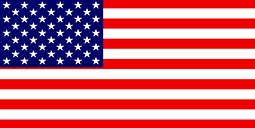Different Types of Wigs
Different Types of Wigs
Wigs have become an essential accessory for those who seek versatility, convenience, and a stunning appearance without the commitment or potential damage to their natural hair. Wigs come in various forms, each offering unique features and benefits, catering to diverse needs and preferences. In this comprehensive guide, we will delve into the different types of wigs, including lace front, full lace, U-part, V-part, and T-part wigs, as well as machine-made, hand-tied, synthetic, and human hair wigs. We'll discuss their pros and cons, helping you make an informed decision and choose the perfect wig to complement your style and transform your look. So, whether you're new to the world of wigs or looking to expand your collection, read on to discover the exciting options awaiting you.
There are several types of wigs available in the market, catering to various preferences, styles, and budgets. Some popular wig types include:
1. Lace Frontal Wigs:
A lace frontal wig is a type of wig that features a lace material across the entire front hairline, extending from ear to ear. The lace frontal section covers the entire hairline and typically measures 13 inches wide by 4 or 6 inches deep. This lace material allows for a natural-looking hairline, giving the illusion of hair growing directly from the scalp.

Here are the pros and cons of lace frontal wigs:
Pros:
- Natural appearance: Lace frontals blend well with your natural hairline, providing a realistic and seamless look.
- Styling versatility: Lace frontal wigs allow for various hairstyles, including updos, side parts, and middle parts.
- Less tension: These wigs don't require the same level of tension and pulling as traditional sew-ins or braids, reducing the risk of hair damage or breakage.
- Easy installation: Lace frontal wigs can be easily installed and removed, making them a convenient choice for those who want to change hairstyles frequently.
- Protective styling: Wearing a lace frontal wig helps protect your natural hair from heat and other styling damage.
Cons:
- Delicate: The lace is delicate and can tear or become damaged if not handled with care.
- Cost: Lace frontal wigs can be more expensive than other types of wigs due to the craftsmanship and materials involved.
- Adhesive: Some lace frontals require adhesive or tape for secure attachment, which may cause discomfort, allergies, or damage to your natural hairline if not applied properly.
- Shorter lifespan: Due to the delicate nature of the lace, lace frontal wigs may have a shorter lifespan compared to no-lace wigs.
2. Lace Closure Wigs
Lace closure wigs are a type of wig that features a small, typically 4x4 inch or 5x5 inch, lace mesh closure sewn onto the wig cap. The lace closure offers a realistic parting space and creates the appearance of a natural scalp. This type of wig is popular because it allows for a more natural look and offers versatility in styling while it's typically more cost-effective than the lace frontal wig.

Here are the pros and cons of lace closure wigs:
Pros:
- Natural appearance: Lace closures blend well with your natural hair, providing a realistic parting and a seamless look.
- Protective styling: Wearing a lace closure wig helps protect your natural hair from heat, tension, and other styling damage.
- Easy installation: Lace closure wigs can be easily installed and removed, making them a convenient choice for those who want to change hairstyles frequently.
- Budget-friendly: Lace closure wigs are often more affordable than lace frontal wigs due to the smaller amount of lace involved.
Cons:
- Less coverage: Lace closure wigs cover a smaller area than lace frontal wigs, so they may not be the best choice if you need more coverage.
- Delicate: The lace is delicate and can tear or become damaged if not handled with care.
- Adhesive: Some lace closures require adhesive or tape for secure attachment, which may cause discomfort, allergies, or damage to your natural hairline if not applied properly.
- Lifespan: The delicate nature of the lace may result in a shorter lifespan compared to no lace wigs if not properly maintained.
3. Full Lace Wigs
Full lace wigs are entirely made of lace material, providing a realistic hairline all around the wig and allowing for a greater range of styling options, including updos and ponytails. These wigs are typically made from human hair and offer a more natural appearance.

Here are the pros and cons of full lace wigs:
Pros:
- Natural appearance: Full lace wigs provide a realistic look, with the lace mesh blending seamlessly with your scalp, offering a natural hairline and parting.
- Styling versatility: Full lace wigs offer the most styling options among all wig types, including updos, braids, and various partings.
- Lightweight and breathable: The lace material makes full lace wigs lightweight and breathable, offering more comfort compared to other wig types.
- Protective styling: Wearing a full lace wig helps protect your natural hair from heat, tension, and other styling damage.
- Suitable for hair loss: Full lace wigs offer complete coverage, making them an ideal choice for those with significant hair loss.
Cons:
- Cost: Full lace wigs are typically more expensive than other wig types due to the craftsmanship and materials involved.
- Delicate: The lace is delicate and can tear or become damaged if not handled with care.
- Maintenance: Full lace wigs require more maintenance and tender loving care due to the larger-scale lace coverage.
- Adhesive: Some full lace wigs require adhesive or tape for secure attachment, which may cause discomfort, allergies, or damage to your natural hairline if not applied properly.
- Longer installation time: Full lace wigs may take longer to install compared to other wig types due to the need for precise placement and customization.
4. 360 lace wigs
The 360 lace wig is a type of wig that features lace material all around the perimeter of the wig cap, allowing for a more natural and versatile hairstyle. It provides 360-degree coverage, making it perfect for updos, ponytails, and other hairstyles that expose the back and sides of the head.

Pros:
- Natural appearance: The lace material blends seamlessly with your scalp, creating the illusion of natural hair growth and providing a more realistic look.
- Versatility: The 360 lace wig offers the freedom to style your hair in various ways, including updos, ponytails, and braids, without revealing the wig edges.
- Breathability: The lace material allows for better air circulation, making the wig more comfortable to wear and reducing the risk of overheating and sweating.
- Less adhesive needed: As the lace is spread all around the perimeter, you may only need to apply adhesive to the front and back areas, reducing potential damage to your hairline.
Cons:
- Higher cost: Due to the additional lace material used and the more complex construction, 360 lace wigs may be more expensive than traditional lace front wigs.
- More maintenance: The extra lace means the wig requires more care and attention when styling, washing, and storing to prevent damage.
- Longer application time: The additional lace might require more time and skill to apply the wig securely, especially for beginners.
5. Glueless Lace Wigs
Glueless lace wigs can be either lace front or full lace wigs that do not require adhesive for application. They are secured with adjustable straps, combs, or clips, providing a comfortable and easy-to-apply alternative to traditional lace wigs.
Here are the pros and cons of glueless lace wigs:
Pros:
- Easy installation: Glueless lace wigs can be easily installed and removed within minutes, making them a convenient choice for those who want to change their hairstyles frequently.
- No adhesive needed: The wig is designed with adjustable straps, combs, or clips, eliminating the need for glue or tape, and reducing the risk of damage to your natural hairline.
- Comfort: Glueless wigs offer more comfort, as no adhesive might cause irritation or allergies.
- Protective styling: Wearing a glueless lace wig helps protect your natural hair from heat, tension, and other styling damage.
- Natural appearance: Glueless lace wigs provide a realistic look, with the lace mesh blending seamlessly with your scalp, offering a natural hairline and parting.
Cons:
- Less secure fit: Glueless wigs may not provide as secure a fit as wigs that use adhesives.
- Limited styling options: Glueless lace wigs may offer fewer styling options than traditional lace wigs, particularly when it comes to updos or hairstyles that require a tight pull.
- Delicate: Similar to traditional lace wigs, the lace is delicate and can tear or become damaged if not handled with care.
6. U-part Wigs
U-part wigs are a type of wig that features a U-shaped opening at the top or front, allowing the wearer to blend their natural hair with the wig for a more realistic appearance. This opening, designed to fit around the wearer's hairline, exposes a section of the natural hair, which can be styled and blended with the wig's hair to create a seamless integration.

Here are the pros and cons of U-part wigs:
Pros:
- Natural appearance: U-part wigs provide a realistic look by blending your natural hair with the wig, offering a seamless transition.
- Easy installation: U-part wigs are more easily to be installed and removed than lace wigs since they require no glue and no tape.
- Protective styling: Wearing a U-part wig helps protect your natural hair from heat, tension, and other styling damage.
- More affordable: U-part wigs are often less expensive than lace wigs due to the absence of lace material.
Cons:
- Limited styling options: U-part wigs offer fewer styling options compared to lace wigs, as your natural hair needs to be left out at the top.
- Less coverage: U-part wigs do not provide full coverage, making them less suitable for those with significant hair loss.
- Hair damage potential: Leaving your natural hair exposed at the top increases the risk of damage from heat styling or manipulation when blending it with the wig.
7. V-part Wigs
V-part wigs are a type of wig with a V-shaped opening at the top or front, allowing the wearer to blend their natural hair with the wig for a more realistic appearance. Similar to U-part wigs, the V-shaped opening exposes a section of the wearer's natural hair, which can be styled and blended with the wig's hair to create a seamless integration. They have become popular because they provide a natural look, allow for easy customization, and require less time and effort for installation compared to other wig types.

Here are the pros and cons of V-part wigs:
Pros:
- Natural appearance: V-part wigs provide a realistic look by blending your natural hair with the wig, offering a seamless transition.
- Easy installation: V-part wigs can be easily installed and removed, making them a convenient choice for those who want to change hairstyles frequently.
- Protective styling: Wearing a V-part wig helps protect your natural hair from heat, tension, and other styling damage.
- More affordable: V-part wigs are often less expensive than lace wigs due to the absence of lace material.
Cons:
- Limited styling options: V-part wigs offer fewer styling options compared to lace wigs, as your natural hair needs to be left out at the top.
- Hair blending: Achieving a seamless look requires blending your natural hair with a wig, which may be time-consuming and difficult for some hair types.
- Less coverage: V-part wigs do not provide full coverage, making them less suitable for those with significant hair loss.
- Hair damage potential: Leaving your natural hair exposed at the top increases the risk of damage from heat styling or manipulation when blending it with the wig.
8. T-part Wigs
T-part wigs are a type of lace wig that features a T-shaped lace section at the top or front of the wig. The T-shape is formed by a middle parting that runs from the front to the crown, and a horizontal lace strip that spans the width of the wig, creating a "T" shape. This design allows for a more natural and realistic appearance when the wig is installed, as the lace material blends with the wearer's scalp.

Here are the pros and cons of T-part wigs:
Pros:
- Natural appearance: T-part wigs provide a realistic look by blending the lace with your scalp, offering a natural hairline and middle part.
- Easy installation: T-part wigs can be easily installed and removed, making them a convenient choice for those who want to change hairstyles frequently.
- Protective styling: Wearing a T-part wig helps protect your natural hair from heat, tension, and other styling damage.
- More affordable: T-part wigs are often less expensive than full lace or lace frontal wigs due to the smaller amount of lace material.
- Less maintenance: T-part wigs generally require less maintenance compared to full lace or lace frontal wigs, as the lace area is smaller.
Cons:
- Limited styling options: T-part wigs offer fewer styling options compared to full lace or lace frontal wigs, as the lace is limited to a T-shaped section.
- Less coverage: T-part wigs do not provide full coverage, making them less suitable for those with significant hair loss.
- Delicate: The lace is delicate and can tear or become damaged if not handled with care.
- Adhesive: Some T-part wigs require adhesive or tape for secure attachment, which may cause discomfort, allergies, or damage to your natural hairline if not applied properly.
9. Machine-made Wigs
Machine-made wigs are created by sewing hair wefts onto a stretchy, breathable cap. These wigs are more affordable than hand-tied wigs but may not have the same natural movement or appearance. Machine-made wigs can be made from synthetic or human hair.

Here are the pros and cons of machine-made wigs:
Pros:
- Affordability: Machine-made wigs are generally more affordable than lace wigs, making them a budget-friendly option.
- Durability: The construction of machine-made wigs makes them more durable than lace wigs, as they are less likely to tear or become damaged.
- Easy maintenance: Machine-made wigs require less maintenance compared to lace wigs, as there is no lace material to care for.
- Faster production: Machine-made wigs can be produced more quickly than hand-tied wigs, making them more readily available in the market.
Cons:
- Less natural appearance: Machine-made wigs may not provide the same natural hairline and part as lace wigs, making them appear less realistic.
- Limited styling options: Machine-made wigs offer fewer styling options compared to lace wigs, as they do not have lace material for customizable parting or hairlines.
- Less breathable: Machine-made wigs tend to be less breathable compared to lace wigs, which may cause discomfort or a feeling of warmth for some wearers.
- Heavier: The construction of machine-made wigs can make them heavier than lace wigs, potentially causing discomfort for some individuals.
- Less suitable for hair loss: Machine-made wigs may not be the best choice for those with significant hair loss or medical conditions causing hair loss, as they do not provide the same level of comfort and breathability as lace wigs.
10. Hand-tied Wigs
These wigs are made by individually hand-tying hair strands to the wig cap, creating a natural movement and allowing for more styling options. Hand-tied wigs are lightweight, comfortable, and offer a more realistic appearance.

Here are the pros and cons of hand-tied wigs:
Pros:
- Natural appearance: Hand-tied wigs offer a more realistic look, as the hair appears to grow directly from the scalp, providing a natural hairline and parting.
- Lightweight and breathable: Hand-tied wigs are lighter and more breathable compared to machine-made wigs, offering a more comfortable wearing experience.
- Styling versatility: Hand-tied wigs often allow for greater styling options, as the hair can be parted and styled in various ways.
- Comfort: The soft, breathable cap construction of hand-tied wigs reduces irritation and is ideal for individuals with sensitive scalps or hair loss.
Cons:
- Cost: Hand-tied wigs are typically more expensive than machine-made wigs due to the labor-intensive process and craftsmanship involved.
- Delicate: Hand-tied wigs can be more delicate and prone to shedding or damage if not handled with care.
- Maintenance: Hand-tied wigs may require more maintenance than machine-made wigs.
- Longer production time: Hand-tied wigs take more time to produce compared to machine-made wigs, as each hair strand is individually knotted by hand.
11. Synthetic Wigs
Made from synthetic fibers, these wigs are an affordable alternative to human hair wigs. They come in a variety of colors, styles, and lengths, and often hold their shape well. However, synthetic wigs may have a less natural appearance and are generally less heat-resistant than human hair wigs.
Here are the pros and cons of synthetic wigs:
Pros:
- Affordability: Synthetic wigs are generally more affordable than human hair wigs, making them a budget-friendly option.
- Low maintenance: Synthetic wigs often require less maintenance compared to human hair wigs, as they tend to hold their style even after washing.
- Colorfast: Synthetic wigs usually maintain their color and vibrancy longer than human hair wigs, as they are less prone to fading.
Cons:
- Less natural appearance: Synthetic wigs may not provide the same natural appearance and texture as human hair wigs, making them appear less realistic.
- Limited styling options: Synthetic wigs generally offer fewer styling options compared to human hair wigs, as they cannot withstand high heat or be colored.
- Less durable: Synthetic wigs tend to have a shorter lifespan than human hair wigs, as the fibers can become frizzy or damaged over time.
- Less breathable: Synthetic wigs are often less breathable compared to human hair wigs, which may cause discomfort or a feeling of warmth for some wearers.
- Sensitivity to heat: Synthetic wigs can be sensitive to heat sources, such as ovens, stoves, or hairdryers, which may cause the fibers to melt or become damaged.
12. Human Hair Wigs
These wigs are made from real human hair, providing a more natural look and feel. Human hair wigs can be styled, colored, and heat-treated, just like your own hair. However, they typically require more maintenance and have a higher price point compared to synthetic wigs.

Here are the pros and cons of human hair wigs:
Pros:
- Natural appearance: Human hair wigs provide a realistic look and feel, as they closely resemble the texture and movement of natural hair.
- Styling versatility: Human hair wigs can be styled, colored, and heat-treated, allowing for greater customization and styling options.
- Durability: With proper care, human hair wigs generally have a longer lifespan than synthetic wigs, making them a worthwhile investment.
- Breathability: Human hair wigs are more breathable compared to synthetic wigs, offering a more comfortable wearing experience.
- Customizable: Human hair wigs can be trimmed, colored, and styled to better suit individual preferences and face shapes.
Cons:
- Cost: Human hair wigs are typically more expensive than synthetic wigs due to the higher quality materials and craftsmanship involved.
- Maintenance: Human hair wigs require more maintenance than synthetic wigs, including regular washing, conditioning, and restyling to maintain their appearance.
- Styling time: Human hair wigs do not hold their style as well as synthetic wigs, which means they may require more frequent styling and touch-ups.
- Availability: High-quality human hair wigs may be less readily available compared to synthetic wigs, as sourcing and processing the hair takes more time and resources.
Conclusion:
As we've explored the various types of wigs in this comprehensive guide, it's clear that there's a wig to suit every style, budget, and lifestyle. From lace front wigs offering natural hairlines to the low-maintenance appeal of synthetic wigs, each type boasts its unique benefits and characteristics. The key to finding the perfect wig lies in understanding your needs, preferences, and comfort level. Take time to consider factors such as your desired appearance, styling versatility, maintenance requirements, and budget. By doing so, you'll be better equipped to choose the right wig that enhances your look and seamlessly fits into your daily routine. With the right wig on your side, you'll enjoy endless opportunities for self-expression and confidence, embracing the beautiful versatility that the world of wigs has to offer.
 40%
40%
OFF Sale-
$223.84
$373.81(2976) (658)
 40%
40%
OFF Sale-
$183.70
$306.78(1438) (1623)
 40%
40%
OFF Sale-
$204.76
$341.95(986) (211)
 40%
40%
OFF Sale-
$208.94
$348.93(2297) (547)
 40%
40%
OFF Sale-
$135.41
$226.13(278) (547)
 40%
40%
OFF Sale-
$67.44
$112.63(836) (259)
 40%
40%
OFF Sale-
$183.70
$306.78(1412) (574)
 40%
40%
OFF Sale-
$220.12
$367.60(1415) (258)
Discover the world of Ula Hair's luxurious human hair wigs! Transform your look instantly with our stunning collection of high-quality human hair wigs in various styles, textures, and colors. Choose the perfect wig to suit your personal style and express your unique personality. Don't miss out on these fabulous hair transformations - shop now and elevate your look!

 USD
USD EUR
EUR GBP
GBP CAD
CAD




















